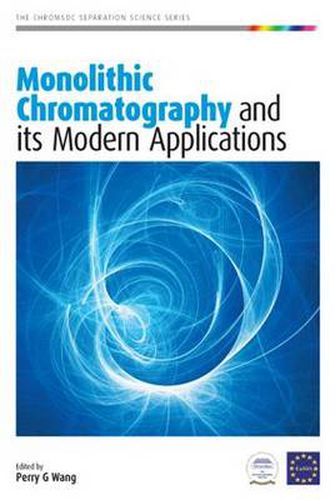Readings Newsletter
Become a Readings Member to make your shopping experience even easier.
Sign in or sign up for free!
You’re not far away from qualifying for FREE standard shipping within Australia
You’ve qualified for FREE standard shipping within Australia
The cart is loading…






High-performance liquid chromatography has become the predominant global separation technique over the past four decades. However, the recent development of an alternative column packing material - a one-piece porous solid known as a ‘monolith’ - has transformed the field. Monoliths have attracted a large amount of interest due to the enhanced speed and thoroughness with which they can separate complex mixtures of biological molecules. Monoliths are porous rod structures characterised by mesopores and macropores. These pores provide monoliths with high permeability, a large number of channels and a high surface area available for reactivity. The backbone of a monolithic column is composed of either an organic or inorganic substrate and can easily be chemically altered for specific applications. Their unique structure gives them several physico-mechanical properties that enable them to perform competitively against traditionally packed columns. In this book, which is endorsed by ChromSoc and EuSSS, global experts comprehensively describe this developing field. Part I covers the synthesis and characterisation of the columns and Part II dicusses their numerous applications. This volume will be of interest to those already using monolithic columns, as well as those who are new to the area and would like to know more about this technique.
$9.00 standard shipping within Australia
FREE standard shipping within Australia for orders over $100.00
Express & International shipping calculated at checkout
High-performance liquid chromatography has become the predominant global separation technique over the past four decades. However, the recent development of an alternative column packing material - a one-piece porous solid known as a ‘monolith’ - has transformed the field. Monoliths have attracted a large amount of interest due to the enhanced speed and thoroughness with which they can separate complex mixtures of biological molecules. Monoliths are porous rod structures characterised by mesopores and macropores. These pores provide monoliths with high permeability, a large number of channels and a high surface area available for reactivity. The backbone of a monolithic column is composed of either an organic or inorganic substrate and can easily be chemically altered for specific applications. Their unique structure gives them several physico-mechanical properties that enable them to perform competitively against traditionally packed columns. In this book, which is endorsed by ChromSoc and EuSSS, global experts comprehensively describe this developing field. Part I covers the synthesis and characterisation of the columns and Part II dicusses their numerous applications. This volume will be of interest to those already using monolithic columns, as well as those who are new to the area and would like to know more about this technique.